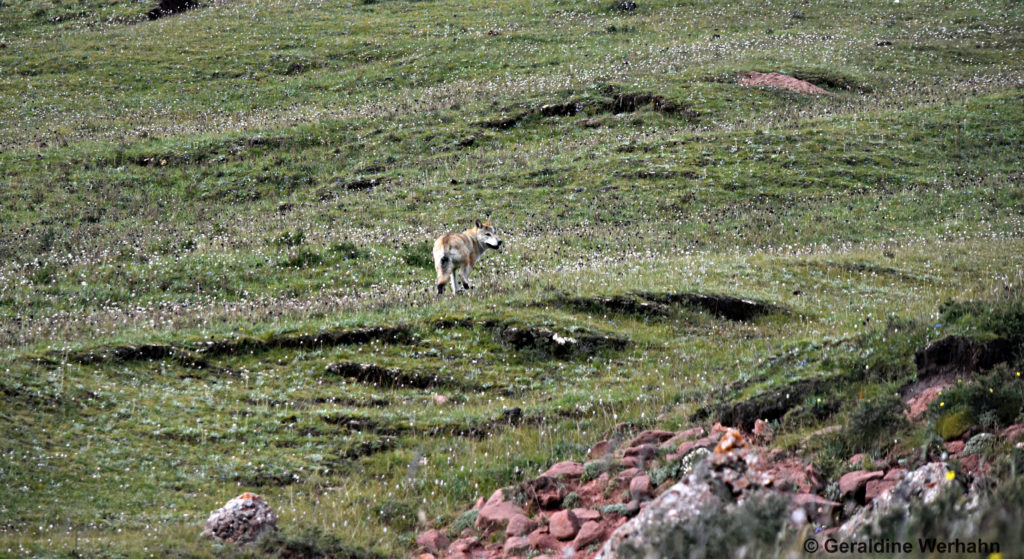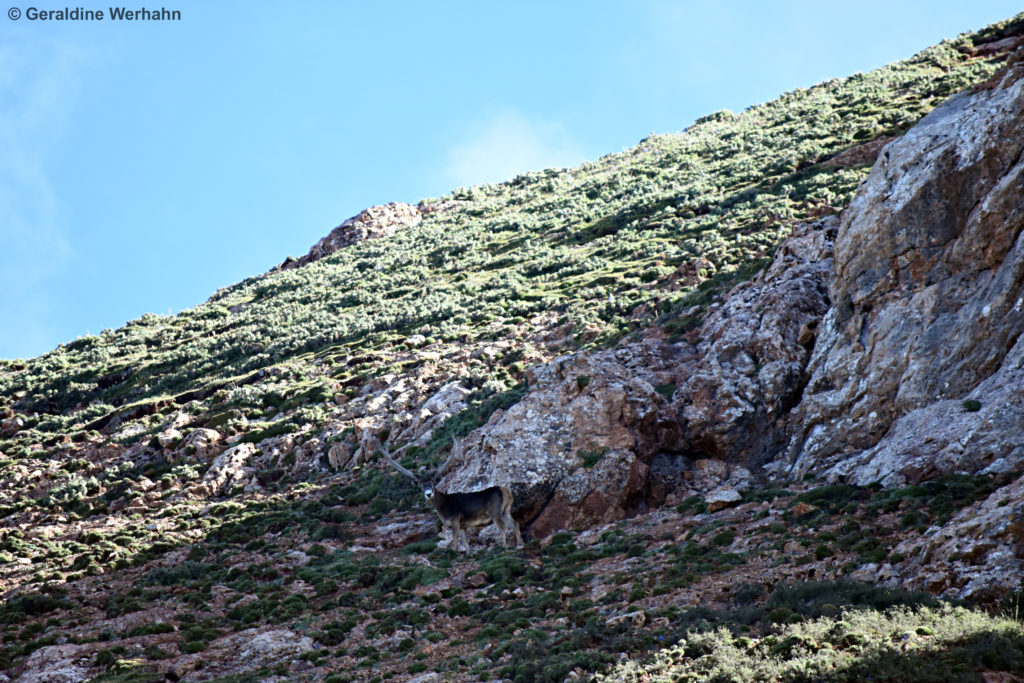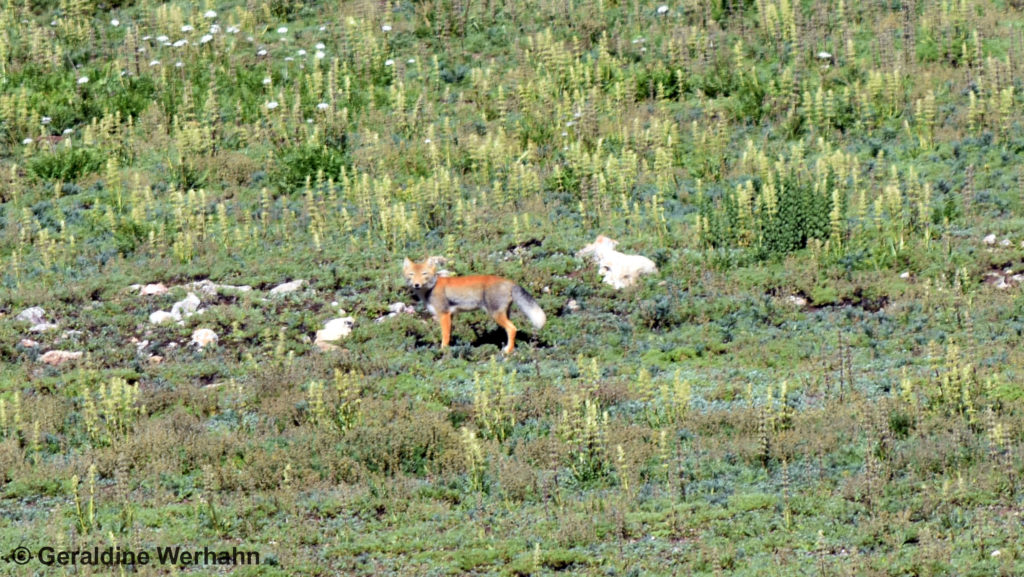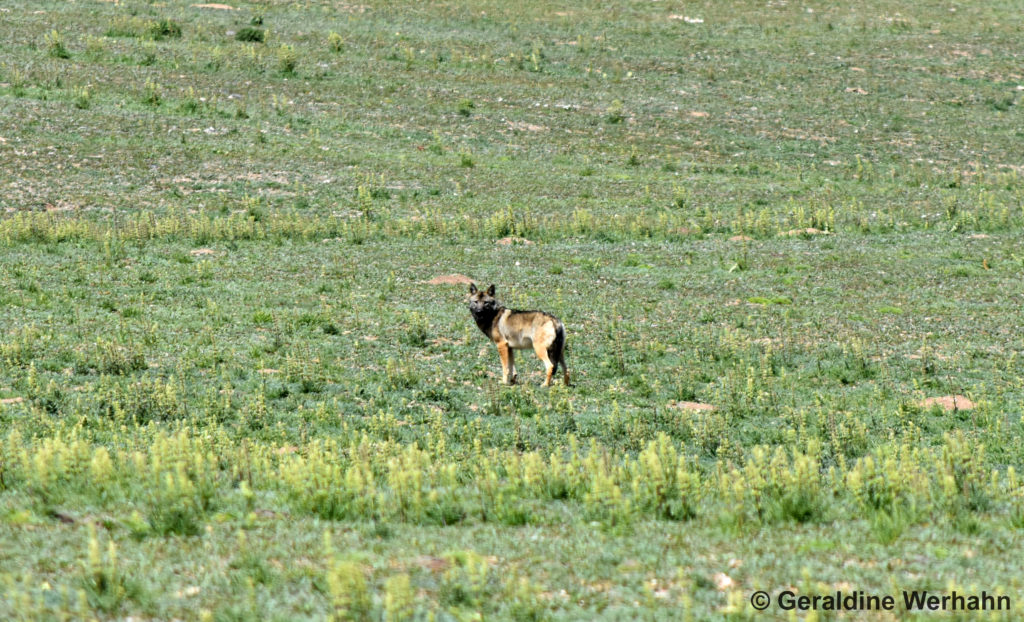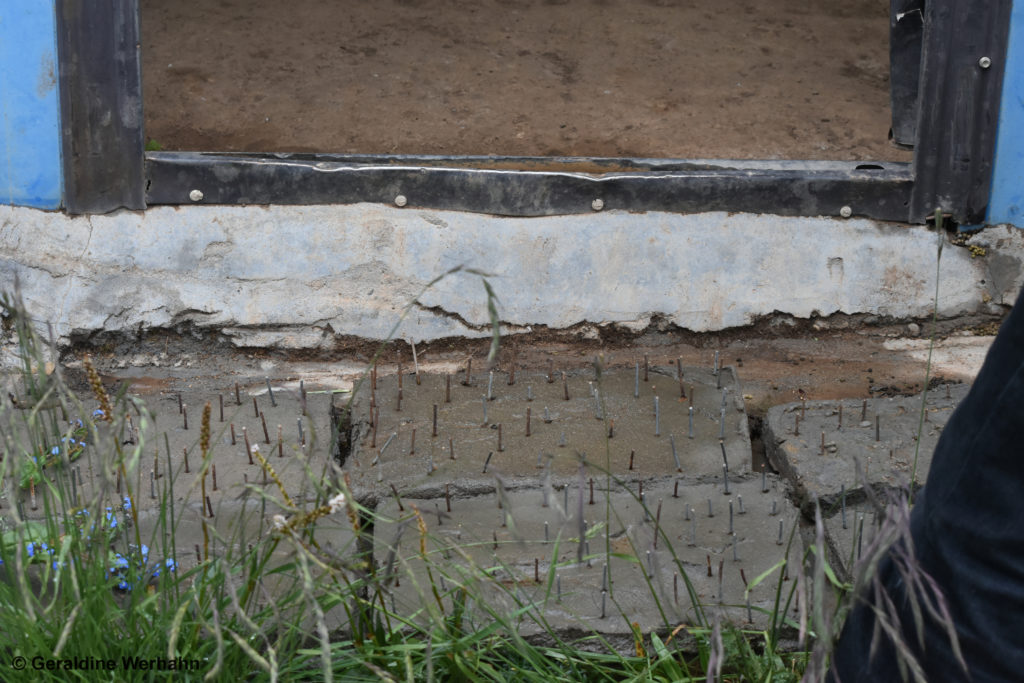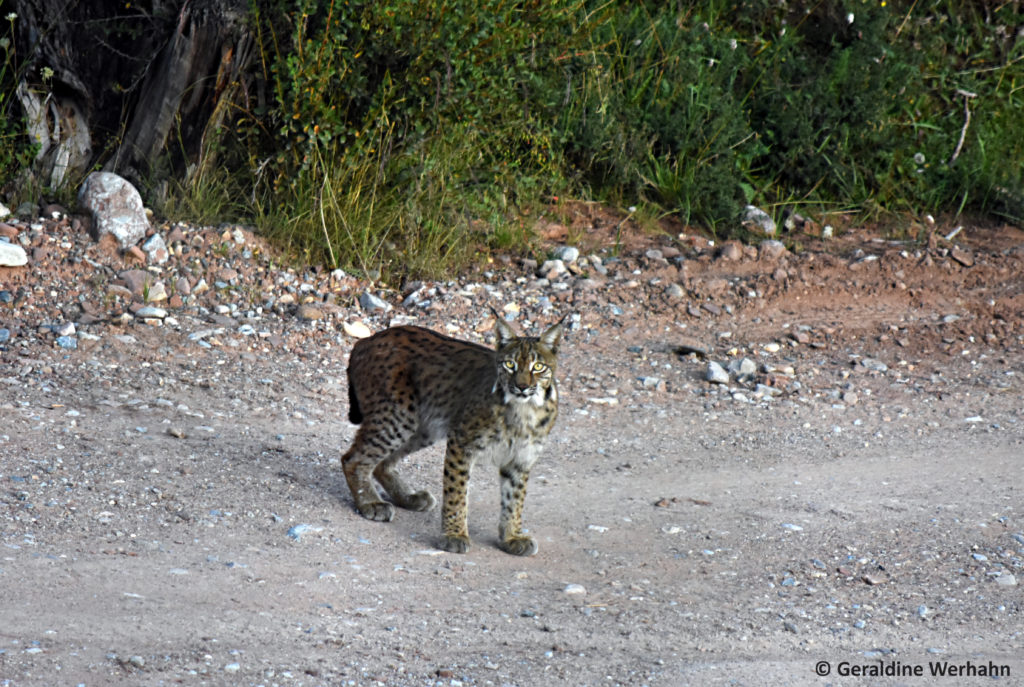Wolf field research on the Qinghai Tibetan Plateau of China 2017
This summer’s Himalayan wolf field work took me to Tibetan Plateau areas in Sanjiangyuan National Nature Reserve in Qinghai Province of China more than 1000km northeast of Nepal. Sanjiangyuan means the “Source of three rivers” referring to the headwaters of the Yangtse, Yellow and Mekong river. Sanjiangyuan holds a rich biodiversity. The wolves here appear like Himalayan wolves and our preliminary genetics work support this understanding.
Besides exciting wolf sightings we also found Tibetan fox (Vulpes ferrilata), Red fox (Vulpes vulpes) and Brown bear (Ursus arctos), White-lipped deer (Cervus albirostris), Tibetan gazelle (Procapra picticaudata), Blue sheep (Pseudois nayaur), Mountain weasel (Mustela altaica), Woolly hare (Lepus oiostolus), Himalayan marmot (Marmota himalayana) and different pika species (Ochotona curzoniae, Ochotona gloveri, Ochotona macrotis).
The wild ungulate prey populations of Blue sheep, Tibetan gazelles and White-lipped deer appeared in relatively healthy state. We saw livestock in most places but with moderate herd sizes, likely because people in this area have an alternative strong income through caterpillar fungus (Ophiocordyceps sinensis) collection which is used as a highly priced traditional medicine.
Many places in this Tibetan Plateau area are accessible by roads. Cars and motorbikes are used to herd yaks and reach even the remotest places. Fences are dissecting the landscapes since a decade reflecting the settlement and land division program implemented upon the nomads. Unfortunately these fences can be detrimental to wildlife!
Here in Qinghai Tibet many Tibetan mastiff dogs are found roaming the lands. Most are kept by humans, but many are also feral and feed themselves on wildlife. These dogs appear to outnumber their wild relatives the wolves. Tibetan mastiffs are very strong dogs adapted to the harsh climatic conditions in these high-altitudes. During a period in the past Tibetan mastiffs were highly demanded in lowland China and therefore yielding high prices. But soon it was realized that these dogs aren’t suitable for lowland regions and prices fell again. The result is an overwhelming number of dogs which pose a conservation threat to many wildlife species in the region. For herbivores, wild and domestic ones, the dogs present an additional predator. And for wolves, the dogs present a conservation concern due to hybridization, food competition and disease transmission. As if to underline this concerns, the next wolf we saw looked like a wolf….no a dog… no a hybrid? More research is needed to understand the situation around wolf-dog hybridization in this region better.
Brown bears (Ursus arctos) are the most feared carnivore by humans in this landscape. The bears break into houses in search for food, at times frequently. While doing so the bears devastate the houses. When people leave their winter homes to stay in their summer herding homes, they usually leave the doors of the deserted winter home open so that the bear (who breaks in anyways) does not also destroy the door! A carpet of nails is often deployed at house entrances to preven bears from entering, but this measure shows only limited effect against a determined Brown bear. Clearly a lot of support is needed to help the local communities live alongside their majestic carnivore community comprised of Brown bears, wolves, Eurasian lynx (Lynx lynx) and Snow leopards (Panthera uncia). On a much sweeter encounter I spotted a mother bear and her cub grooming each other in the evening hours, while Tibetan gazelles were grazing peacefully a few hundred meters up-valley.
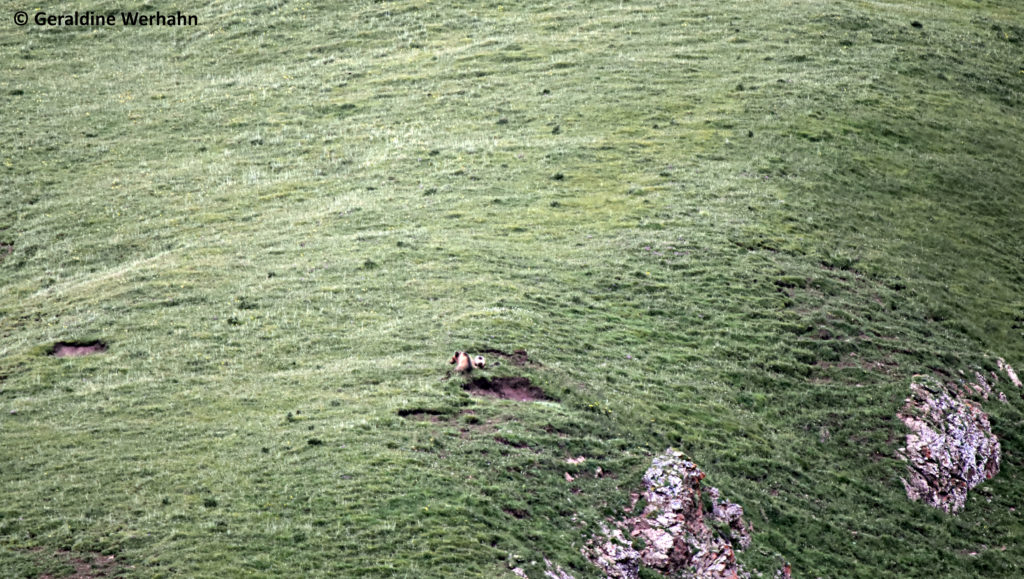
A brown bear female grooming her cub in the evening hours, while Tibetan gazelles were grazing peacefully a few hundred meters up-valley.
We found little conservation awareness for wolves in the study area in Sanjiangyuan. Herders dislike wolves, and wolves have a relatively low cultural status. A lot of amazing conservation work is done for the snow leopard. Hence, it seems valuable to implement a comprehensive conservation approach where the conservation of all carinvores should be pursued hand in hand. Given the large numbers of dogs here, using Tibetan mastiffs for livestock protection might be a great opportunity for turning part of the problem into part of the solution.
The field trip ended with the sighting of a pair of wolves and a Eurasian lynx staring at us with bright yellow eyes! My very warm thank you to the entire team of Shanshui who is doing very inspiring conservation work with the local communities!
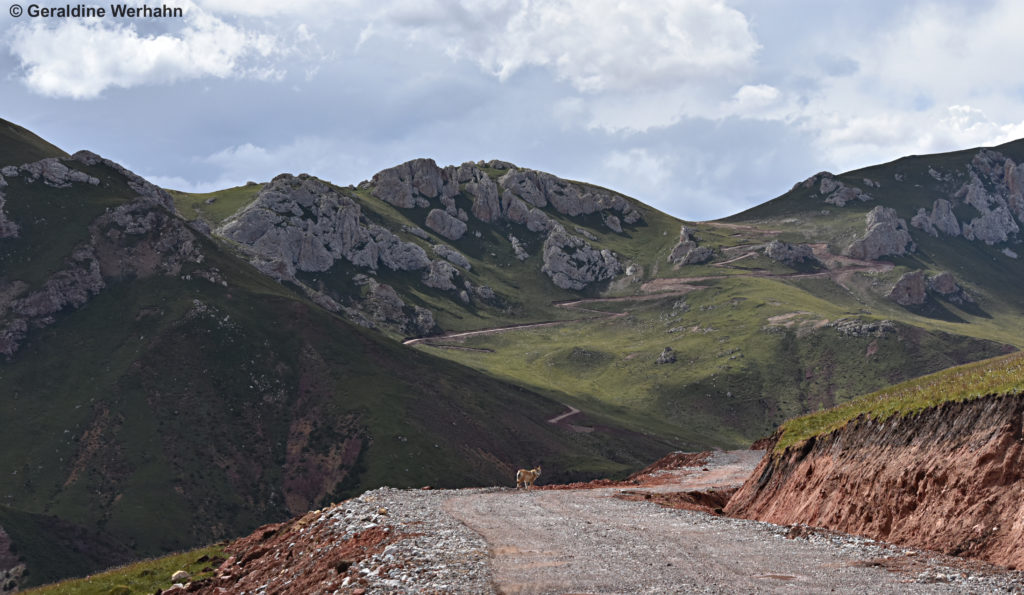
A wolf suddendly crosses your path running uphill – later we realize that there is a second one travelling with it.
Article about the Conservation work of Shanshui: Meet the villagers who protect biodiversity on the top of the world
Article about Tibetan Mastiffs in Qinghai: Tibetan Mastiffs: Abandoned and dangerous

